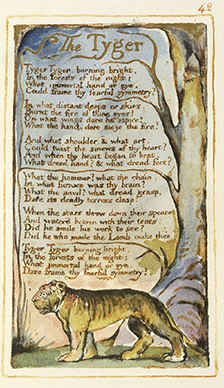Spring is a time for renewal—a period of promise that brings with it a sense of fresh possibility. These five new books celebrate the season and deliver inspiring perspectives on personal growth, healing and inner transformation.
In her uplifting memoir I Will Not Fear: My Story of a Lifetime of Building Faith Under Fire bestselling author Melba Pattillo Beals tells the story of how her spiritual beliefs helped her find a path forward during a troubling time in American history. Growing up in Little Rock, Arkansas, Beals endured death threats and harassment from white supremacists. On September 25, 1957, along with eight other African-American students, she integrated Little Rock’s Central High School, becoming part of the group dubbed the Little Rock Nine. “That day, I confronted for the first time the reality of what I was facing,” Beals writes. “I questioned whether I had what it took to live through the integration process over the long haul.”
She found the fortitude necessary in her Christian faith. Beals went on to become a successful journalist and reporter, and while building a career, she also raised a family. Her poignant memoir serves as a testament to the dynamic influence of faith and how it can be harnessed to improve individual lives and heal broken communities. Filled with stories of victories both great and small, Beals’ memoir is a true spirit- booster.
LEARNING TO LET GO
If you’re struggling with negative emotions or bad habits (and who isn’t?), you’ll find relief in Dean Sluyter’s Fear Less: Living Beyond Fear, Anxiety, Anger, and Addiction. In his new book, Sluyter, an expert on stress management and meditation, offers advice on how to break self-sabotaging habits, from obsessive overthinking to digital-device addiction. He also includes solutions for coping with deep-seated sources of anxiety, like aging and death. By combining spiritual teachings from across the centuries with current research, he shows readers how to embrace everyday life and build self-esteem.
Sluyter’s approach taps into both the body and the mind, providing simple meditation techniques and stretching exercises that are easy to integrate into a daily routine. “If, after a little practice,” Sluyter says, “you fear less—even one percent less than before—then you’re already coming out of the darkness and into the light.” With his help, you can banish negativity and adopt new habits that will improve your all-around attitude.
PAIN INTO TRIUMPH
In 2002, 14-year-old Elizabeth Smart made national news when she was abducted and held captive for nine months by religious zealot Brian David Mitchell. She chronicled the horrors of her kidnapping in her bestselling memoir, My Story (2013). Using her past trials as a point of departure, Smart has built a life based on positivity. Now president of the Elizabeth Smart Foundation, she works as a victim advocate. In Where There’s Hope: Healing, Moving Forward, and Never Giving Up, she reflects on her personal journey and explores the heartening accounts of others who have transcended hardship and found happiness. Smart interviewed a wide range of subjects for the book, from notable women like Ann Romney, who has struggled with multiple sclerosis, to survivors like Bre Lasley, a stabbing victim who founded the support group Fight Like Girls. The result is an empowering narrative that gives readers guidance for working through resentment, fear and sadness. “I think hope is something we can create for ourselves,” Smart writes, “and it can be a stronger force than anything life throws at us.” Readers in search of a bright side will find it here.
COUNT YOUR BLESSINGS
“I have spent much of my life worried that I was an ingrate,” bestselling author Diana Butler Bass admits in Grateful: The Transformative Power of Giving Thanks. Bass had long associated gratitude with the disagreeable notion of “debt and duty,” and so in her new book, she set out to increase her understanding of what it means to be thankful. In the process, she cultivated her own life-changing sense of gratitude.
Mixing sociological research with warm personal anecdotes of appreciation for the everyday, Bass examines why individuals find it challenging to maintain a practice of gratitude and reveals how thankfulness can serve as the foundation of a healthy community. “Gratitude is not about stuff,” Bass stresses. “To choose gratitude is to hear an inner urging toward thanks, to see the grace in life, and to respond.” As Bass’ story proves, it’s never too late to start being grateful.
LEARNING LOVE
Bestselling author Geneen Roth wrestled with body-image issues for years before realizing that being thin did not equal being happy. She tried various approaches to self-improvement until her path to inner peace took an unexpected turn: Roth found that when she quit working on herself, she finally felt comfortable in her own skin. In This Messy Magnificent Life: A Field Guide, she opens up about the move from self-improvement to self-acceptance—a critical shift that allowed her to find true fulfillment.
Roth, whose 10 previous books include Women Food and God, has appeared on “The Oprah Winfrey Show” and “The View.” In This Messy Magnificent Life, she shares insights into her struggles with food along with practical suggestions for overcoming the fears and anxieties that so often stand in the way of self-acceptance. Roth says a willingness “to relinquish the Project of Me and stop trying to fix what had never been broken” made it possible for her to live contentedly in the now. Her advice: Stop waiting for “someday.” Now is the time to celebrate the qualities that make you unique and to be bold in your pursuit of personal bliss. This book will help get you started.
This article was originally published in the April 2018 issue of BookPage. Download the entire issue for the Kindle or Nook.



















